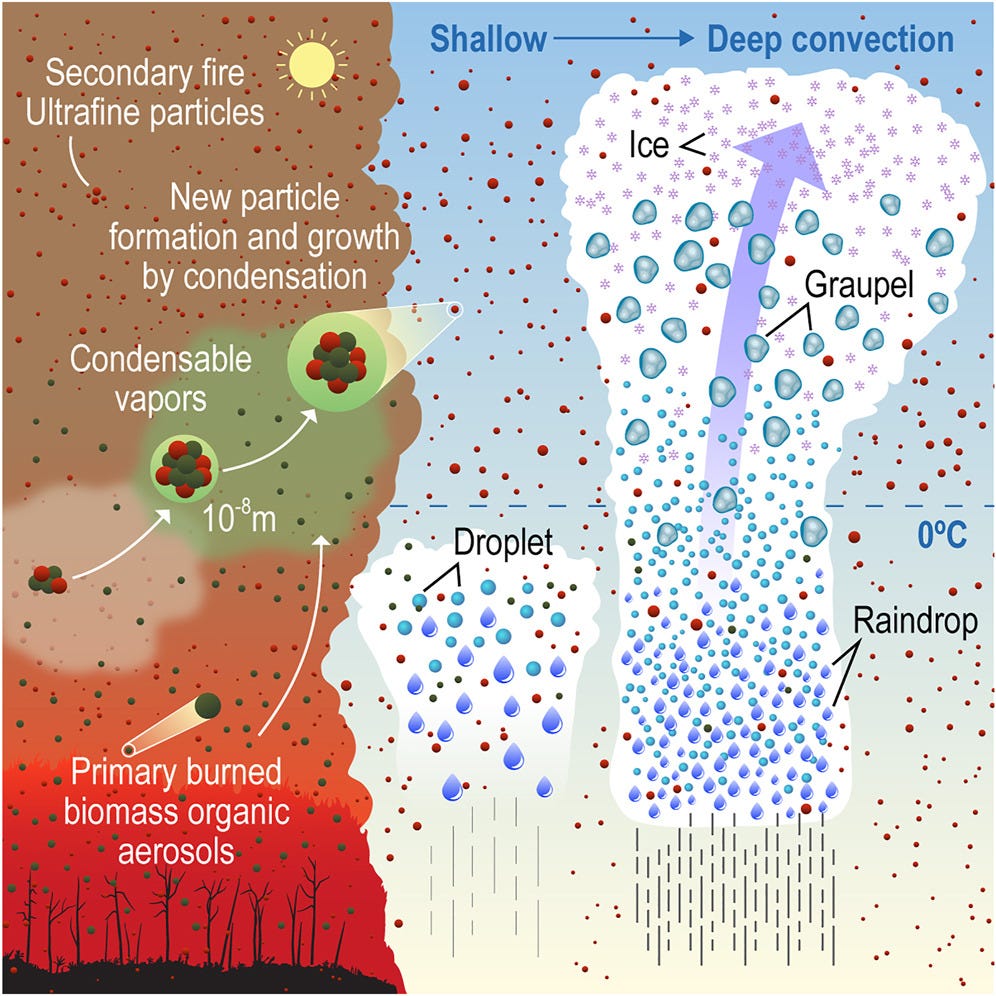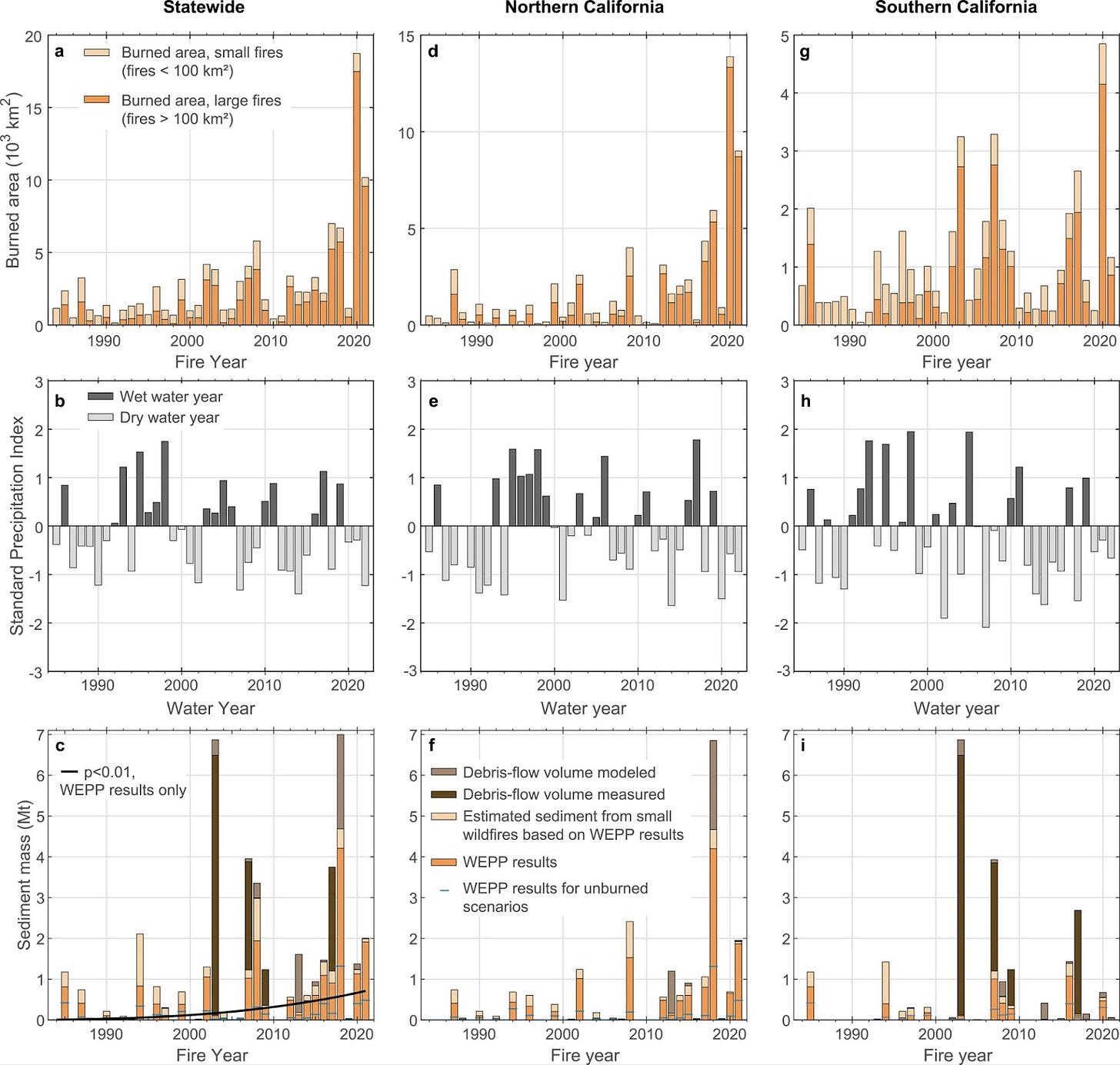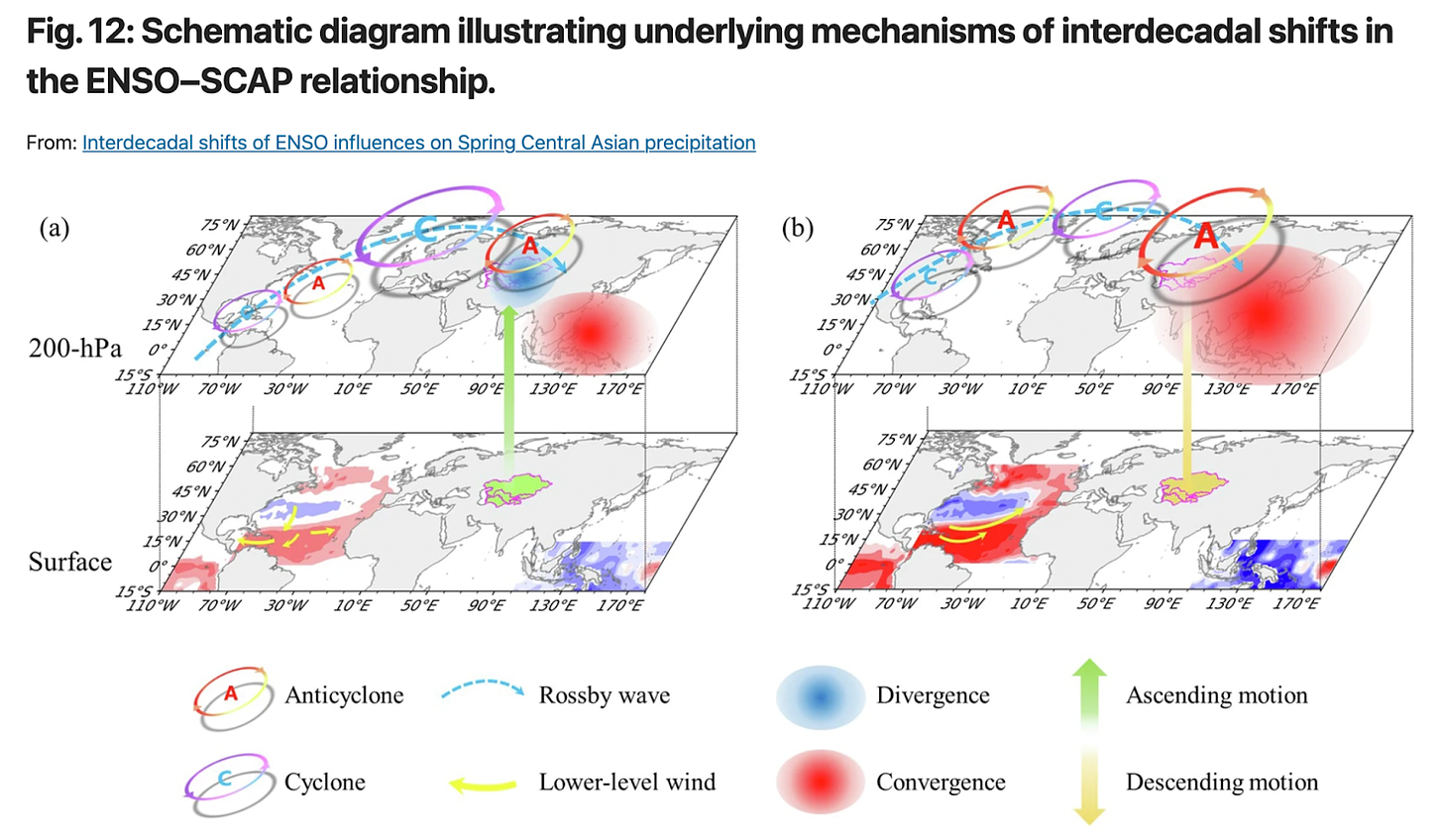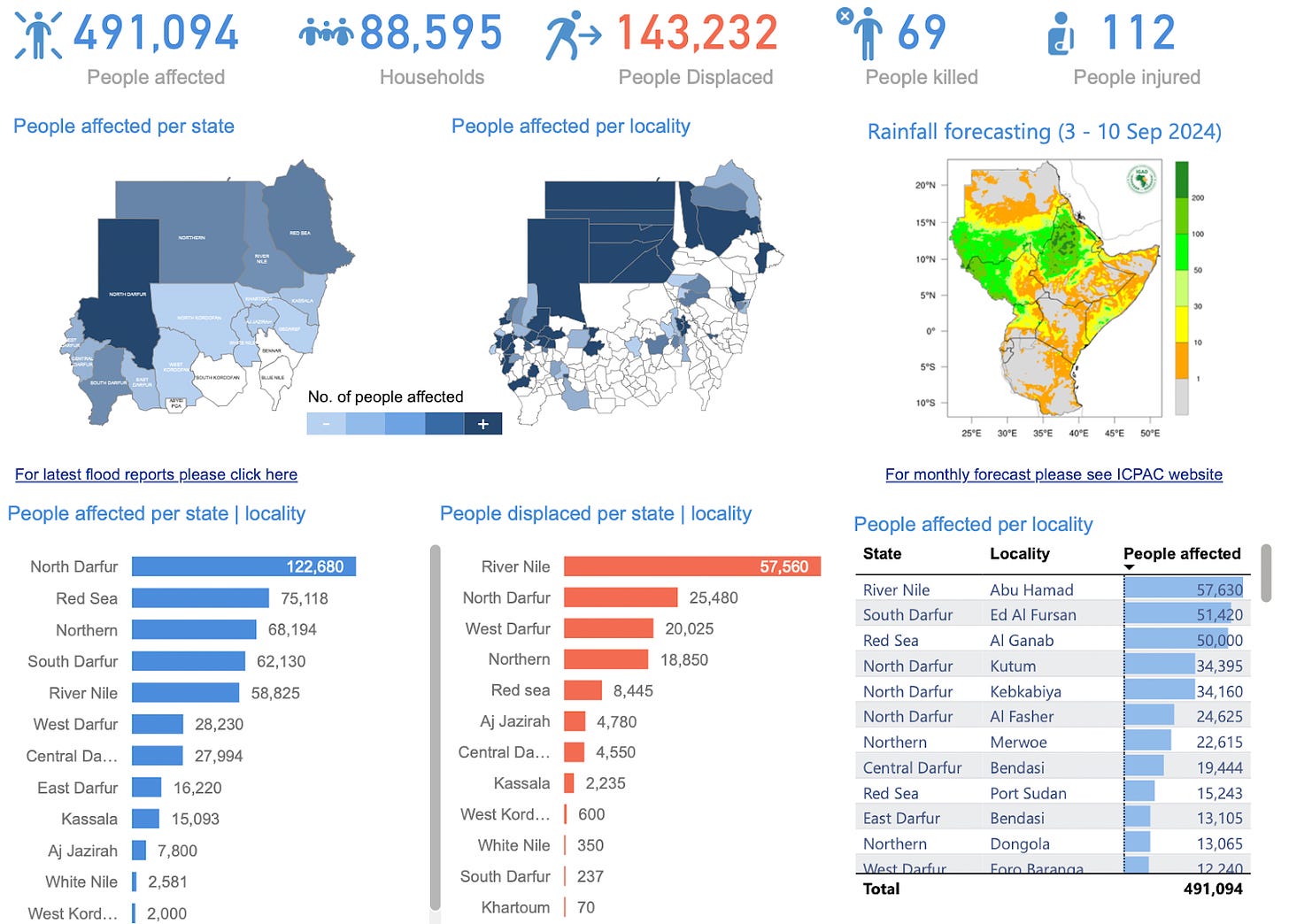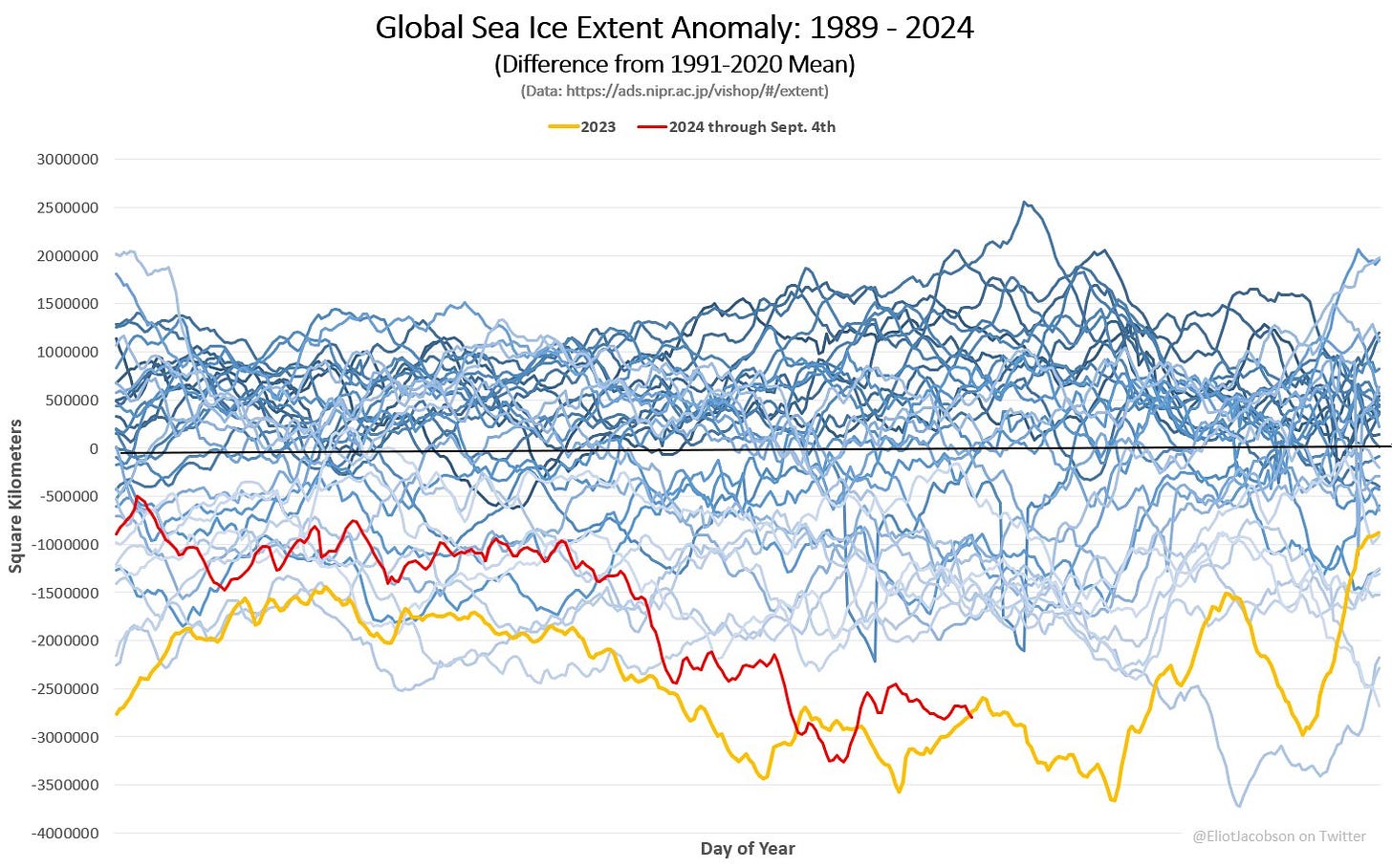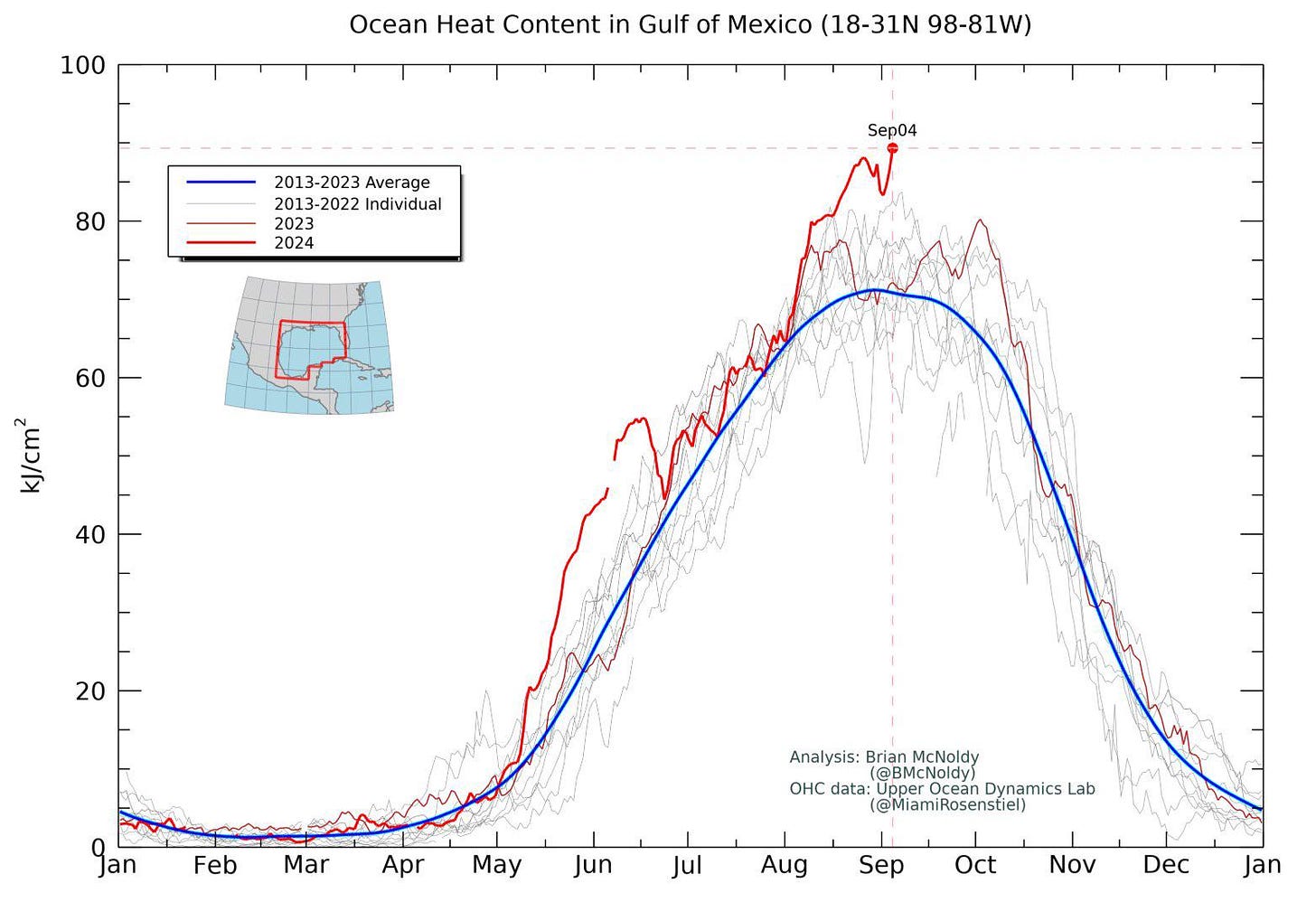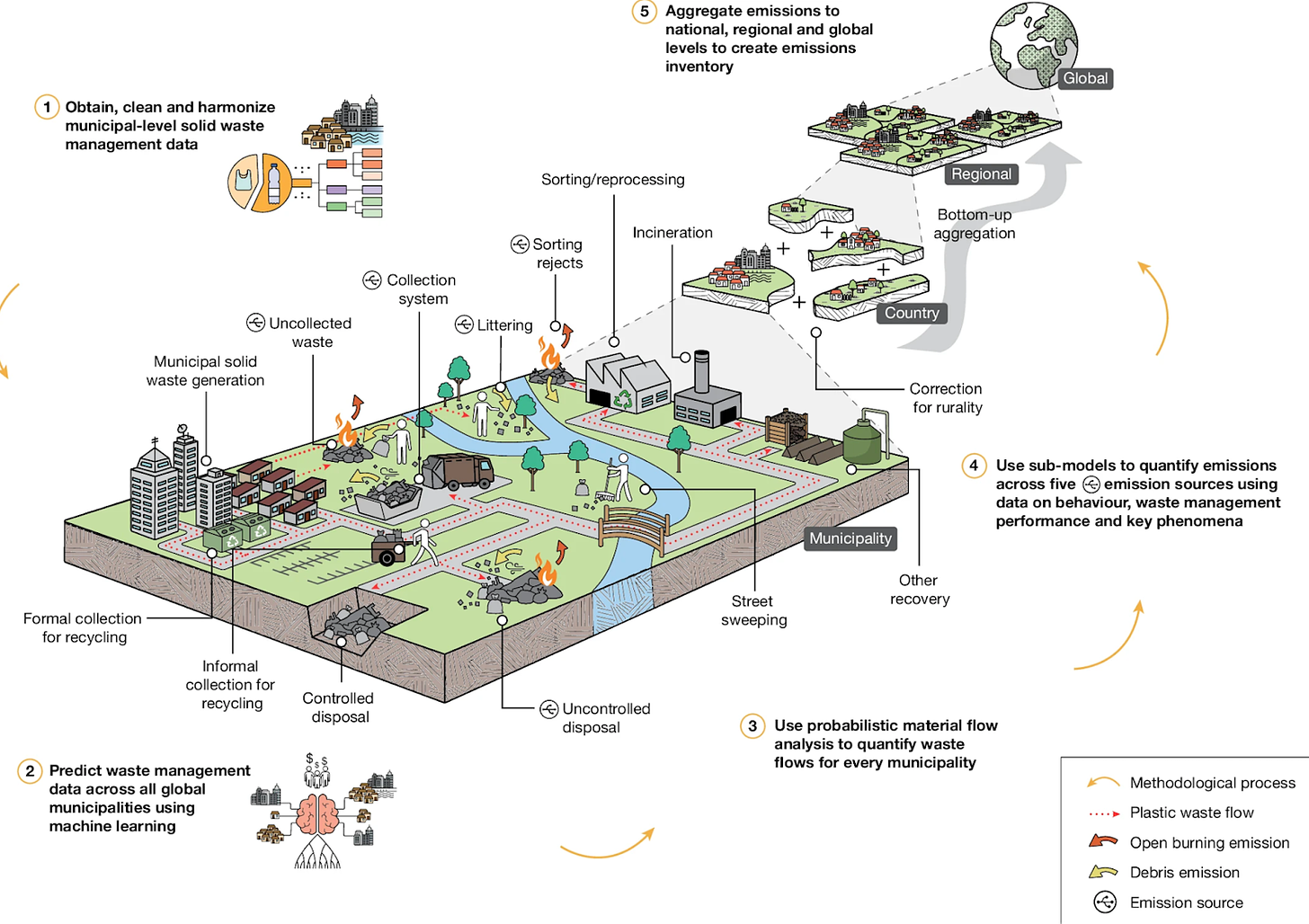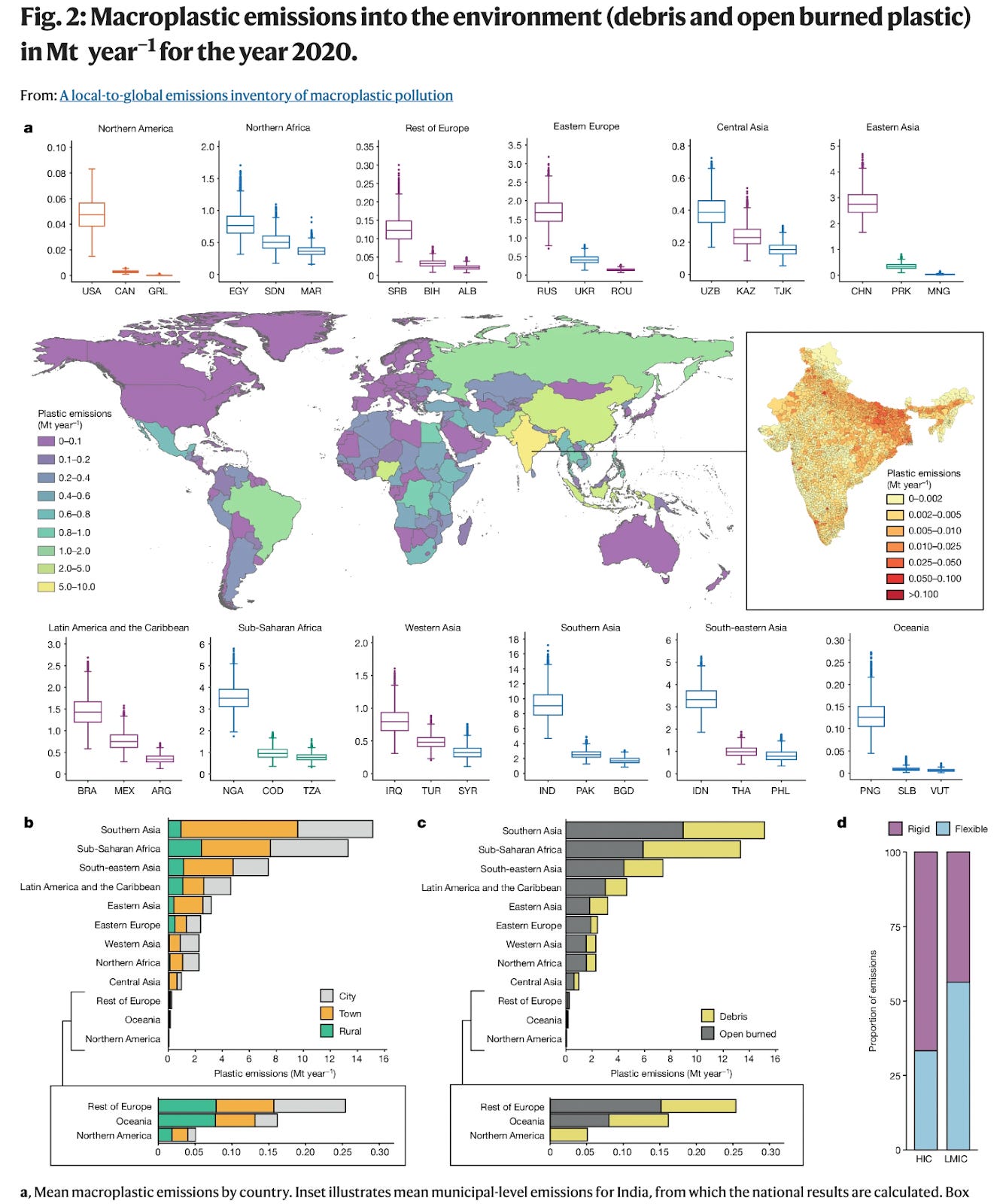Last Week in Collapse: September 1-7, 2024
Life and death after the flood, the heat waves, the microplastics, and the Wars.
Last Week in Collapse: September 1-7, 2024
This is Last Week in Collapse, a weekly newsletter compiling some of the most important, timely, useful, soul-shattering, ironic, stunning, exhausting, or otherwise must-see/can’t-look-away moments in Collapse.
This is the 141st newsletter. You can find the August 25-31 edition here on Reddit if you missed it last week. Thank you for subscribing to the Substack version.
——————————
The UN says August set new global heat records, according to early data from the EU. This was the hottest August in recorded history, during the hottest summer in human history, during the hottest year on record. Many countries, like Spain, felt their hottest August ever.
An old Greek village was revealed for the first time in 30+ years, because much of a large reservoir’s water was diverted to Athens during their emergency Drought. Greece felt its hottest June and July ever this year. Rising Mediterranean temperatures are threatening a sealife dieoff. And the Caspian Sea is drying up.
Relentless flooding has blasted refugee camps in South Sudan, where an abnormally heavy rainy season has washed out the land, seemingly permanently, leaving 140,000+ refugees stranded on a newly formed island. Twenty flights arrive daily to provision the survivors. “My land is a river now…All my livelihood has been lost,” one elderly man said, having seen all of his ~400 livestock killed in the disaster. The economic impacts of their oil industry’s breakdown, and currency crisis adds to the country’s desperation.
Scientists are looking closer at ultrafine particles (UFPs) from wildfires, and the dangers they pose to human health. UFPs also contribute to storm clouds & strong rainfall. Another study in JGR Earth Surface found a 10x increase in California land erosion, due to wildfires, from 1984-2021.
A paywalled study in Science determined that 45% of the earth’s surface is made up of “deserts, shrublands, grasslands, and savanna woodlands” and affected by various degrees of water scarcity. Because these “drylands” release less moisture (and more heat) into the atmosphere, they also receive less rainfall, which contributes to feedback loops which dry these lands further. Another study, published in npj climate and atmospheric science, claims that El Niño’s effect in Central Asia’s precipitation levels is increasing, and has likely created (and will continue to lead to) heavier rainfalls in the region. And a similar study in Nature Communications establishes that tropical forests are experiencing drying and warming soil—this “will intensify soil carbon losses and negatively impact carbon storage in tropical forests under climate change,” according to the lead researcher. Predictions indicate a longer dry season in the future.
This phenomenon is already at play in Brazil, where average temperatures for this part of the year are 5-10 °C hotter. The Pantanal still burns, and thousands of wildfires burn across São Paulo state. In the last week, Brazilian wildfires have torn through over 590 square km—just over the size of Ibiza. This year, Brazil has already felt wildfires burn 83% more area than from January-August 2023. Over 160 municipalities across Brazil have declared a state of emergency, and many fires are still growing.
Super Typhoon Yagi tore through the Philippines before hitting Vietnam & China, leaving 1M+ in China temporarily homeless. At least 16 people were slain by the storm in the Philippines, four in Vietnam, and two in China.
The EU released a 110-page report on “the Future of EU Agriculture”, and it details a set of 10-15-year recommendations ironed out over 7 months of negotiations. There are no fancy graphics, just text.
“The triple crisis of climate change, pollution, and biodiversity loss represents the most imposing challenge of planetary scale. To date, six out of nine planetary boundaries have been transgressed and global progress towards environmental and climate goals remains modest….Depleted and polluted soils are less fertile and food resistant, diminished in their ability to store both carbon and water. These developments pose a serious threat to people’s health and well-being, to food security and to society and the economy in general, especially to agriculture and food systems….With Europe as the fastest-warming continent, extreme weather events, ranging from heatwaves and droughts to foods and hailstorms, are becoming increasingly frequent. In some parts of Europe, water availability is already a severe problem….The increasingly frequent “weaponisation” of food and strategic non-food agricultural products such as energy, notably in the context of Russia’s war of aggression against Ukraine, has significantly strained the sector….” -selections from the Chapter 2 summary
Floods in Niger killed dozens, destroying tens of thousands of homes and a historic mosque. Floods continue in Sudan. Reports emerged that Kim Jong-Un had 20-30 officials executed after flooding in July killed several and crippled regional infrastructure. Ireland saw above-average rainfall last month as well.
Murmansk, Russia, set new September heat records last week. Monthly records were also set in Germany, much of Scandinavia, parts of China, in both Koreas, and in Indonesia. Global sea ice hit a new daily low on 4 September.
Flooding in India killed at least 6. A Florida cartographer was fired after leaking state plans to construct hotels, golf courses, and pickleball courts across 9 state parks. The Gulf of Mexico is now, on average, hotter than ever before in recorded history.
——————————
Nigeria’s oil shortage worsens—and prices are rising. Colombia held a nationwide strike over rising diesel prices. Similar problems are developing in Egypt over natural gas, with secondary effects on the economy. In August 2023, a high-ranking ex-official who was stationed in Egypt assured me that “Egypt will collapse within six years.” If true, they have fewer than 5 years left.
Some experts believe Long COVID is coming for us all—and it just might end up affecting most living people.
“People see gradual improvement in symptoms over time, but a plateau may occur 6-12 months post-infection, and only 22% fully recover within a year. Others remain stable or get worse….each additional infection a person gets does mounting cumulative damage to the immune system….They [the U.S. government] used the CDC, the WHO, and the HHS [Department of Health and Human Services] to amplify the message that the vaccine is all you need and you don’t need to worry about anything else….Most people have had COVID three and a half times on average already. After another four years of the same pattern, if we don’t change course, most people in the U.S. will have some flavor of Long COVID of one sort or another….The latest boosters/vaccines do offer SOME protection from catching the disease. And while it varies somewhat from variant to variant, that starts at about 60%, peaking 2 weeks after inoculation and lasts for about 4 months, and then after that declines at about 4% decrease in effectiveness per month thereafter….Each new variant, really it’s just a coin toss on how lethal it is….Now we also have to be concerned about the bird flu and the responses and mitigation efforts associated with that. Bird flu appears to have a very high death rate from infection, as high as 58%.” -excerpts from an interview with Dr. Phillip Alvelda
Hundreds of polio vaccination teams were deployed across Gaza, and total vaccinations are closing in on 200,000, preventing a potential large-scale outbreak. Several hundred thousand children still need vaccinations.
Moderna’s mpox vaccination is proving itself in early testing. In the DRC, childhood mpox cases have spiked 75x since the start of year. This was also the first week of school in the DRC. Over 45% of new mpox cases in August were in the war-ravaged South Kivu province, on the Rwanda & Burundi border (and bordering Tanzania across Lake Tanganyika). In Goma, a city of some 2M people, “conditions necessary to prevent it from spreading in and around Goma are simply not in place.” The first mpox vaccines have arrived in the DRC.
A study published in Environmental Science & Technology Letters found that the PFAS chemical trifluoroacetate has been steadily accumulating in Danish groundwater for the past 60 years. Meanwhile, a Nature study concluded that “global plastic waste emissions {increase} at 52.1 million metric tonnes (Mt) per year {according to 2020 figures}, with approximately 57% wt. and 43% wt. open burned and unburned debris, respectively. Littering is the largest emission source in the Global North, whereas uncollected waste is the dominant emissions source across the Global South.” The Top 5 plastic-burning cities are, in descending order: Lagos (metro pop: 16M+) Nigeria, Delhi (metro pop: 33M+) India, Luanda (metro pop: 9.5M+) Angola, Moscow (metro pop: 12M+) Russia, and Cairo (metro pop: 22M+) Egypt. Roughly 19% of people worldwide live in a place where there are no government waste management services.
Keep reading with a 7-day free trial
Subscribe to Last Week in Collapse to keep reading this post and get 7 days of free access to the full post archives.




